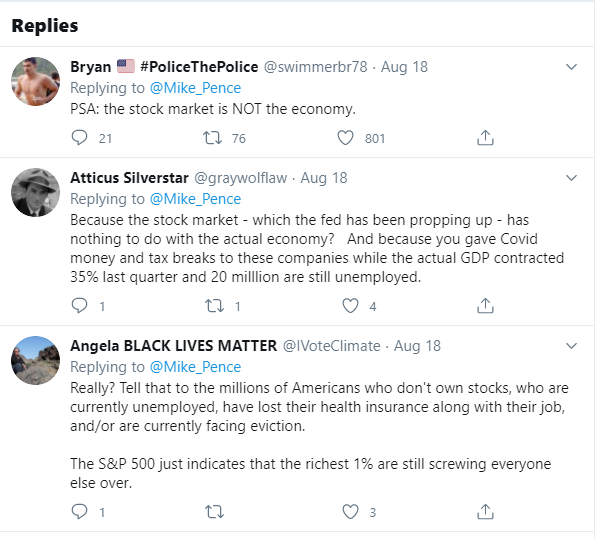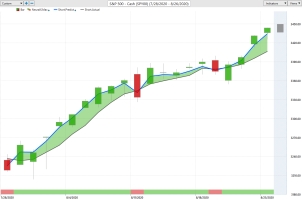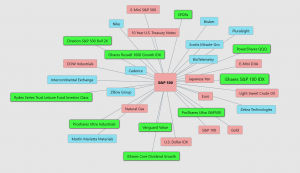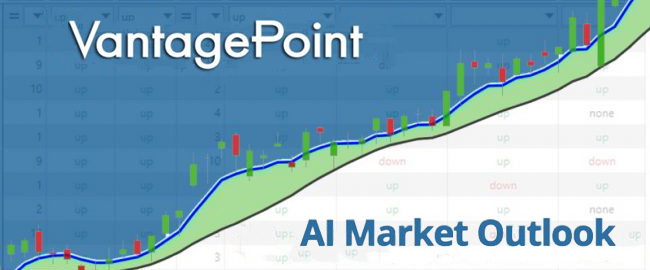Changing Stock Market Narratives
Alvin Toeffler, author of Future Shock, once commented that in the future, “change will happen faster and faster.” If you have been watching Wall Street for any period of time, you can appreciate traders and investors tell themselves stories which drive their investment thesis and support how they allocate money in the economy. This standard is something that we can all be aware of as we observe and listen to what authoritative figures are saying about money and markets. The challenge facing traders and investors related to these stories remains, are these narratives helpful in making investment decisions, and how do you navigate the volatility of a quickly changing narrative?
A good friend of mine is a former broker. We were discussing markets recently and he shared with me that narratives are in high demand, but they are often quite damaging to a successful trade. When he was a broker, customers would call in for price quotes. Any time that a price moved sharply in one direction or another, the customers would always want a soothing narrative. The problem he faced as a broker was that he did not know why the price moved sharply in one direction or another, so he would try to look up a story from an authoritative source and share what they claimed was moving the market.
We love stories. We love to hear stories. We love to tell stories. Does the narrative drive the market? Or does the market drive the narrative? Or is it possible that the narrative is created simply because of the demand that exists for a soothing reason to explain cause and effect?
Robert Shiller is a Nobel Prize winning economist who recently authored a book entitled Narrative Economics: How Stories Go Viral and Drive Major Economic Events. In this book, Shiller explores what he describes as the power of “contagious popular stories that spread through word of mouth, the news media, and social media.” Shiller proposes that narrative stories are among the most compelling reasons that investors and traders allocate money in the markets. Traders are supposed to carefully weigh things like the level of prices, interest rates, and expected profits before they invest. But Shiller claims that “a narrative is often more emotionally compelling and resonant than an argument about valuation or something else.”
The challenge for anyone believing a narrative is how quickly they change. In 2020 alone, traders/investors are still coping with the coronavirus and lockdowns along with earnings disappointments and Fed stimulus. All of these put together create wild narratives that could be right out of a science fiction novel. The country is still at least partially closed. There’s little to no nightlife in America’s biggest cities. Tens of millions are unemployed. Social unrest exists in major metropolitan areas during a very tumultuous Presidential election year.
As we embrace a narrative we overlook how often and quickly it changes and the effects to our trading and portfolio can be quite detrimental.
Here are a handful of recent stock market narratives which have been pitched and debated in mainstream financial news media this year. Some of these themes are recurring. In sharing these themes, I’m not endorsing them, just pointing out popular narratives that traders and investors embrace as part of their investment thesis. This style of trading and price discovery is filled with huge risk because the narrative is primarily opinion based. If you pay attention to financial news, you’ll be familiar with these narratives and recognize many commentators often mix and match several of narratives in their market analyses so that they sound and appear more intelligent.
#1 The “V” shaped recovery we were promised.

Vice President Mike Pence’s Tweet from August 18, 2020
On August 18th, Vice President Mike Pence tweeted, the “S&P 500 closed at a RECORD high today, fully wiping out its losses from the Coronavirus! This is the great American comeback!”
This theme or narrative is most often quoted by politicians and economists aligned with politicians, who try to promote the perspective that the stock market and general economy are very tightly correlated.
Within this theme are sub-themes of the great American comeback and American markets are the greatest in the world.
#2 Replies….to Vice President Pence’s tweet!
Whether you are a Republican or a Democrat, most people can differentiate and recognize that the economy and stock market are two separate arenas.
Why do politicians promote the idea that the stock market is the best scorecard for the economy? What about jobless claims, economic growth, stimulus spending, budget deficits, mortgage foreclosures, etc.? There have been more than 56 million first time unemployment claims since the first week of March 2020. That works out to 33% of the U.S. workforce. While this statistic changes weekly it is the backdrop to those who try to propagandize the stock markets success and equate it with a strong economy.

While the stock market continues to surge, many people recognize the huge disconnect between what is going on in the stock market and the general economy. This theme often is reiterated during more severe market pullbacks. Hundreds and hundreds of tweets replying to Vice President Pence aren’t buying the narrative.
#3 Don’t Fight the Fed.
At the June Federal Reserve Press Conference, Chairman Jerome Powell said that interest rates will remain near zero for at least another 12 months. “We’re not even thinking about raising rates,” he famously said. “What we’re thinking about is providing support for this economy.”

Sub theme: Money Printer go Brrrr!
The following meme has been viewed and retweeted millions of times as it crudely communicates the idea of a centralized authority debasing money by adding more currency into the economy to prevent a downturn.
This narrative promotes the idea that Central Banks will do whatever it takes to keep stock markets high. If the Fed is going to use its unlimited money printing machine to prop up the financial markets, the idea here is to recognize that the Fed is presenting you the investor or trader with a huge money-making opportunity. Don’t fight the Fed and their printing press. Instead front run them to huge profits.
The “Don’t Fight the Fed” narrative is one of the most popular themes on Wall Street. This meme on the other hand likens the Fed to promoters of a Zombie apocalypse.

Money Printer Go Brrr Meme
#4 Dave Portnoy is outperforming Hedge Fund Managers.
Mr. Portnoy, the founder of Barstool Sports, has become an internet celebrity. When the sports betting industry was shut down due to the pandemic, Portnoy started his career day trading stocks. Over the past 5 months Portnoy, has developed a huge following as a “pump and dump” trader. He has become the internet symbol of the day-trading craze, where he livestreams his daily trading sessions on Twitter, giving followers a glimpse into both his successes and failures as he slings positions worth millions of dollars and outperforms seasoned hedge fund managers. His best trades have been buy-and-holds in Spirit Airlines and Boeing, which have gains of 169 percent and 58 percent, respectively. He also made 130 percent on a day trade in the recently bankrupt rental car company Hertz. Recently he took huge losses trying to day trade the cryptocurrency market.

Dave Portnoy
Portnoy is a hero to the tens of thousands of meme-driven Robinhood traders. One has to wonder about the psychology and efficacy of day trading the stock market when celebrity tabloid news sites like TMZ promote articles that tell you it is easy to day trade stocks! But since Dave Portnoy can day trade stocks better than the pros, how hard can it be? Have you ever noticed that when newbies tell you something is easy that the “tune” usually changes?
I am reminded of the 2003-2007 housing boom where anyone with a pulse was making several hundred percent flipping real estate. Day traders just want to have fun… until they get wiped out.
#5 The “Trump Election” Narrative
Expect an unusual election season. You can look back on a previous blog post discussing how the stock market has proven to be 100% accurate since 1984 in forecasting who will be the next President. You can read that post here.

Incumbents do whatever they can to promote a perspective of prosperity in an election year. Looking forward, the election has the potential to add volatility to markets if investors and traders tell themselves a “fear” story. Sensing this, President Trump has warned the electorate that the stock market will disintegrate if he loses the Presidency. Trump garners a lot of attention for using Twitter to attack America’s trading partners, political opponents, and media conglomerates. But he often takes to Twitter to celebrate the strength of the American economy and its publicly-traded companies. Many observers believe that President Trump, like many politicians, view the performance of the stock market as their economic report card.
#6 Stock Splits Are Good! This narrative promotes the psychology that you are getting more for less.
What would you rather have 100 shares of a stock priced at $50 or 200 shares of the same stock priced at $25? While the valuation is identical in this example, the psychology is that owning 200 shares is better than only owning 100 shares of the same thing. Don’t let the arithmetic get in the way of the positive psychology!

The reasoning here is quite problematic, but what drives markets is psychology and for now stock splits are perceived as giving traders more for less. Since perception is reality, traders are buying stocks before their stocks split to qualify for “more shares” after the adjusted stock split.
Apple and Tesla have announced upcoming stock splits. Apple’s stock market value reached $2 trillion recently which is larger than the GDP of more than 180 countries. Apple’s market valuation has doubled in only the last 21 weeks in spite of lackluster sales and earnings.
Value-driven investors, on the other hand, are looking at Apple’s price to earnings ratio of 38 to 1 as a warning that the tech titan is very overvalued.
#7 You can’t go wrong with FANGMAN.

Big Tech dominates. FANGMAN is an acronym for Facebook, Apple, Netflix, Google, Microsoft, Amazon, and Nvidia. These 7 Tech companies rose 37% during the first 7 months of the year. The remaining 493 companies in the S&P 500 lost 6%. These 7 companies constitute 22% of the stock market’s total capitalization. This concentration has not been seen in the stock market for over 70 years. This is not a story of S&P 500 success. It is a story of S&P “7” dominance. The fact that 98% of the S&P 500 is being catapulted by the top 1 1/2% is not reported in the media at all. Yet it is center stage for all to observe. It just does not seem to be prudent to ignore that the other 493 companies in the S&P 500 are not performing. This clearly is a story of technology consolidation and not stock market success. Traders embracing this narrative are not buying the S&P but focusing their efforts on FANGMAN.
#8 The bear market is over and a new bull market has begun.

The stocks markets are up across the boards from their lows at the end of March. Let the new bull market reign. Up, Up and Away!
#9 Negative Interest Rates are introducing a New Era of Global Liquidity.
The negative real interest rate world we live in has traders and investors move to short terms equities as it is an easier financial playground to chase yield than other financial assets.

#10 A Covid-19 vaccine will be introduced shortly allowing all of us to get back to normal quickly.

These are the most popular narratives that I have heard over the past 8 months. There are others related to the Trade war, Interest Rates, etc. But as you ponder these examples of narratives, I also want you to think about RISK.
Risk is by definition the threat of loss due to uncertainty. What makes each of these narratives risky is that they are riddled with opinions, which are disguised as facts.
A great trader does not have to have all the facts to be able to act upon a solid trend that is in motion. Trading at its essence is finding a strong trend and deciding where you get in and where you get out. Ideally what a trader wants to know is where do the strongest trends exist.
This is why artificial intelligence is an absolute necessity for traders today. Look at the following chart of the S&P 500 Index with the Vantagepoint A.I. Forecast.

This forecast has proven to be up to 87.4% accurate in predicting the future trend of the stock market. I think you’d agree that is far more impressive than any of the narratives you just read about.
Our forecasts are created by looking at the top 32 drivers of an asset’s price. We do this from the foundational perspective that we live in a global marketplace. What happens in one part of the world has global implications and your charts and analysis need to communicate this information to you before you ever think of putting on that next trade.

Moving forward I want you to think long and hard about HOW you are going to trade the markets if you do not have an edge. As the volatility of the past few months becomes commonplace are you prepared?
Think about those losing trades and ask yourself what did you learn from that experience? What is your method for analyzing risk?
Are you capable of finding those markets with the best risk/reward ratios out of the thousands of trading opportunities that exist?
Knowledge. Useful knowledge. And its application is what ai delivers.
Artificial intelligence is not “a would be nice to have” tool.
It is an “absolutely must have” tool to flourish in today’s global markets.
Intrigued? Visit with us and check out the a.i. at our Next Live Training.
It’s not magic. It’s machine learning.









